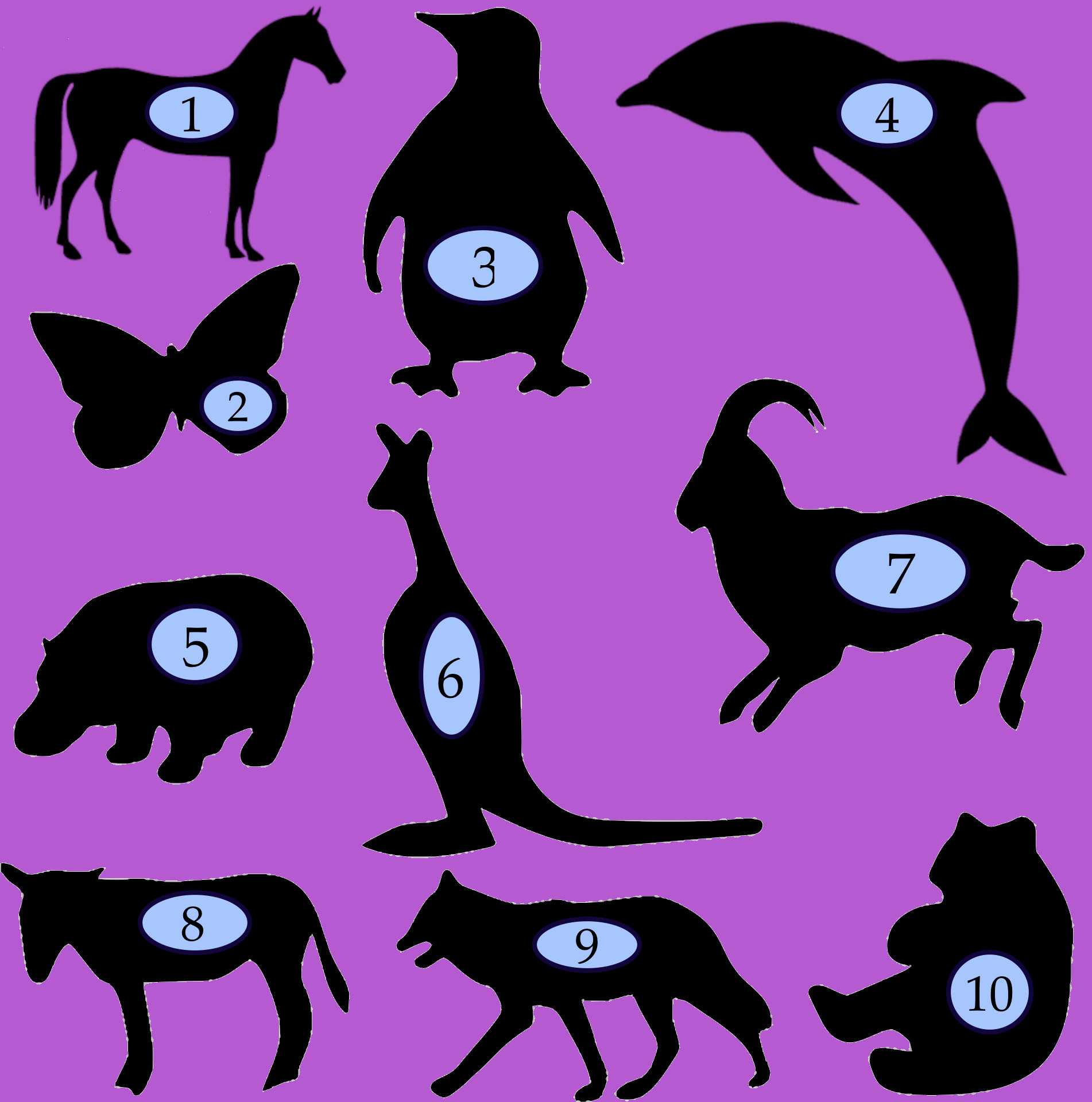
Animal Shadows in My Screen Trivia Quiz
Hey, kids, can you identify these animals just from these dark outlines? Have fun and good luck! (Meant for very young children.)
A label quiz
by gracious1.
Estimated time: 3 mins.


| 1. |
| 2. |
| 3. |
| 4. |
| 5. |
| 6. |
| 7. |
| 8. |
| 9. |
| 10. |